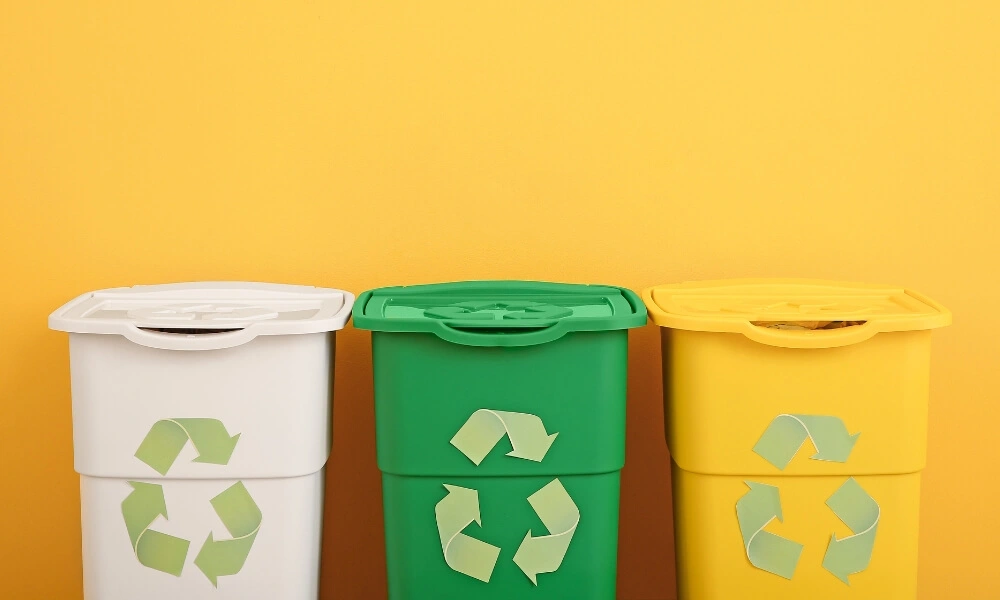Recycling bins, with their variety of colors—blue, green, red, yellow, and white—aren’t just colorful additions to our surroundings. Each color plays a vital role, serving as a crucial identifier for a different category of recyclable waste. They act as guides in our collective journey towards sustainability, helping us sort and segregate our waste for efficient repurposing and reuse.
In our blog post, “Recycling Bin Color Codes and Their Meanings,” we aim to decode these color codes for you. It’s more than just understanding recycling; it’s about acquiring the knowledge to make informed choices that reduce contamination in the recycling stream and contribute positively to our shared environmental sustainability goals.
So, let’s dive into the world of recycling bin color codes and equip ourselves with the knowledge to make our recycling efforts more effective and impactful.
What’s Recycling Bin?
A recycling bin is a container used to hold recyclables until they are collected by the waste management service. The purpose of these bins is to encourage and facilitate the separation of different types of waste, making it easier for these materials to be recycled. Recycling bins are often designed for specific types of waste, such as paper, plastic, glass, or organic materials. They can come in various shapes and sizes, from small desk-side bins to large curbside containers.
Typically, recycling bins are color-coded, a feature that helps distinguish their intended use. The colors may vary depending on local regulations and practices. For example, a blue bin might be used for paper in one area and mixed recycling in another.
The concept of using a separate bin for recyclables is to segregate waste, helping to reduce the amount of material that ends up in landfills and promoting the reuse of valuable resources. Recycling helps conserve raw materials, saves energy, and mitigates the harmful environmental impacts of waste disposal, making it an essential practice in sustainable waste management.
Recycling Bin Color Codes And Their Meanings
Recycling bins are typically color-coded to help users differentiate between the types of waste each bin is meant to collect. The colors used can vary from place to place, as different jurisdictions may have different rules and guidelines for recycling. However, let’s break down some of the commonly used colors and their general meanings:
1. Blue Bin
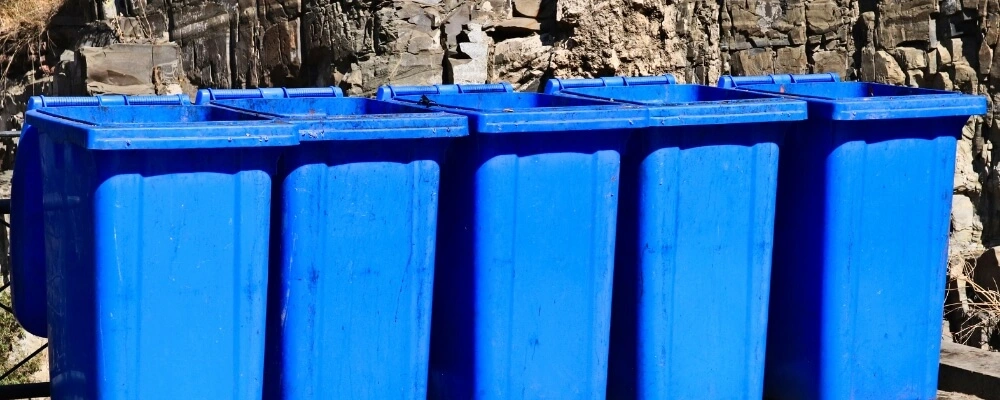
Blue recycling bins are critical in waste management systems as they commonly collect paper and cardboard materials. Blue has become a universal symbol for paper recycling, reflecting the need to conserve trees and wildlife. Paper products are derived from wood pulp, which necessitates cutting down trees. So, by recycling paper, we’re essentially contributing to the preservation of forests and, by extension, the protection of wildlife habitats.
Materials typically suitable for blue bins include office paper, newspapers, magazines, envelopes, cardboard boxes, and other paper products. These materials, once collected, are taken to recycling facilities, where they’re sorted, cleaned, and processed into a pulp. This pulp is then used to create new paper products, reducing the need for fresh wood pulp and thus helping to conserve our forests.
In some areas, blue bins might also be used for mixed recyclables, a category that expands beyond paper to include plastic, glass, and metal items. When used for this purpose, the blue bin serves as a single collection point for various recyclable materials, making the recycling process simpler and more convenient for users.
2. Green Bin
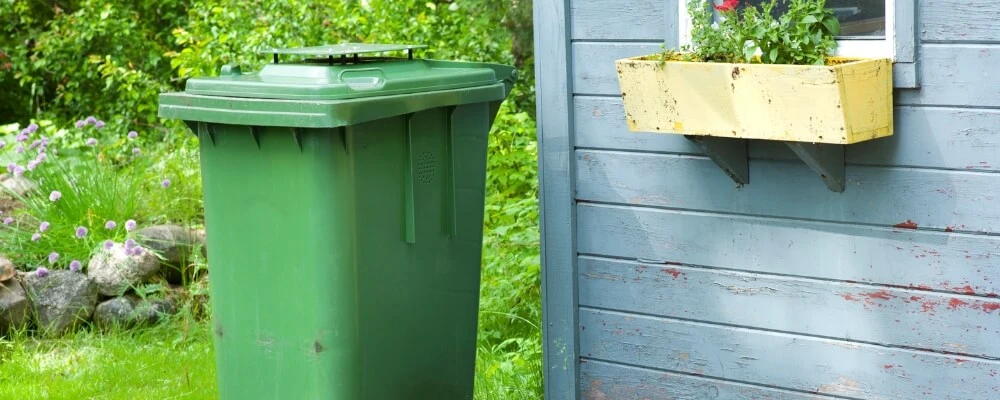
Green recycling bins are primarily designated for organic waste, a category of waste that includes biodegradable materials. The term ‘organic’ refers to materials that originate from living organisms. Waste typically includes food scraps, yard waste (like leaves, grass clippings, and branches), and other naturally occurring waste products.
The green color of these bins symbolizes the natural cycle of life and decay, mirroring the process these materials undergo. When organic materials are disposed of in green bins, they’re usually destined for composting processes. Composting is a method where organic waste is controlled and sped up to decay, turning it into nutrient-rich soil. This soil, also known as compost, can improve the earth’s fertility, promoting healthier plant growth.
Using green bins, we can effectively turn our organic waste into a valuable resource, which then completes the nutrient cycle by returning these essential elements to the soil. It’s an excellent example of a circular economy, where waste is not just waste but a resource that can be utilized again.
3. Red Bin
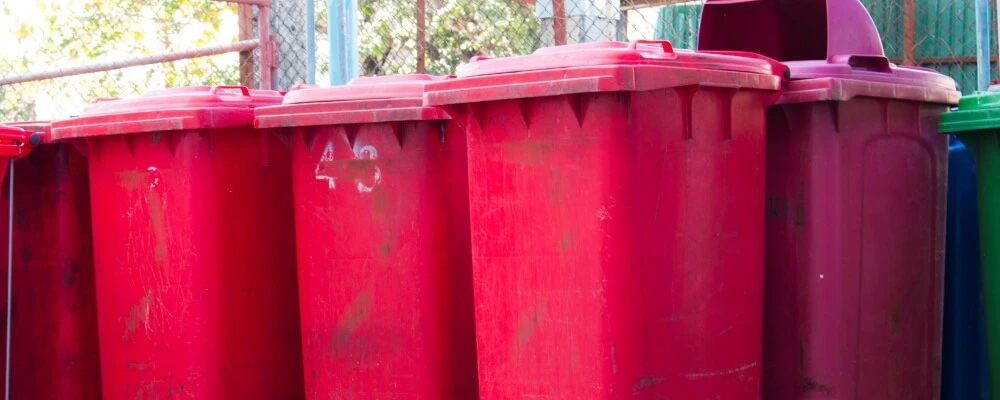
Red recycling bins are often used to collect hazardous waste or particular types of recyclable materials, depending on regional regulations. Hazardous waste refers to materials that can pose a potential risk to public health or the environment. This could include batteries, paint, chemicals, and electronic waste. These substances require special handling and disposal procedures to prevent any harm.
In certain areas, red bins might be used for waste items coated with plastic, such as plastic bags, cling wraps, and sticky tape. These are not typically recyclable in the standard waste stream due to their plastic coating, which can interfere with recycling. Special collection and recycling processes are required for these items. Red, a color often associated with caution or danger, signifies that the waste collected within these bins needs careful handling due to its environmental impact if improperly disposed of.
4. Yellow Bin
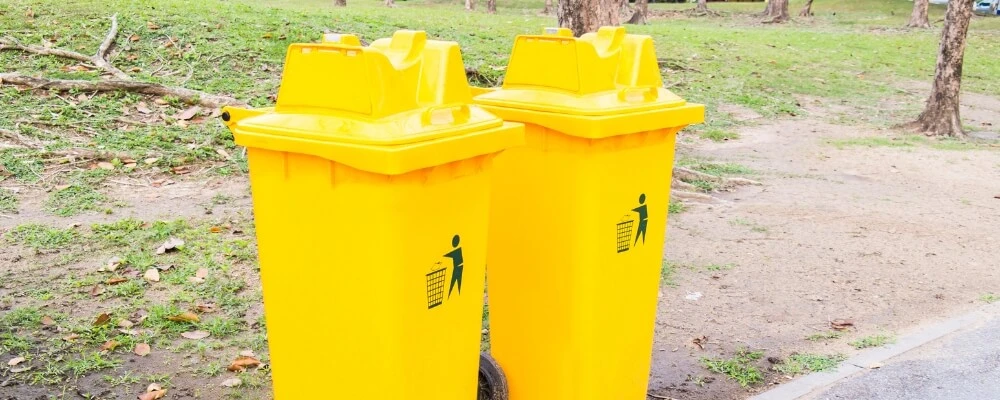
Yellow recycling bins are commonly found in places that use a mixed or co-mingled recycling system. These systems are designed to collect a variety of recyclable materials all in one bin, simplifying the recycling process for households and businesses.
Items typically acceptable in yellow bins include glass bottles, cardboard boxes, plastic containers, aluminum cans, newspapers, and more. Each of these materials, once collected, is sent to a Materials Recovery Facility (MRF) where they are sorted into separate streams, cleaned, and prepared for recycling. Yellow is often associated with mixed recycling bins due to its high visibility and its association with caution, reminding users to consider the impact of their waste.
5. White Bin
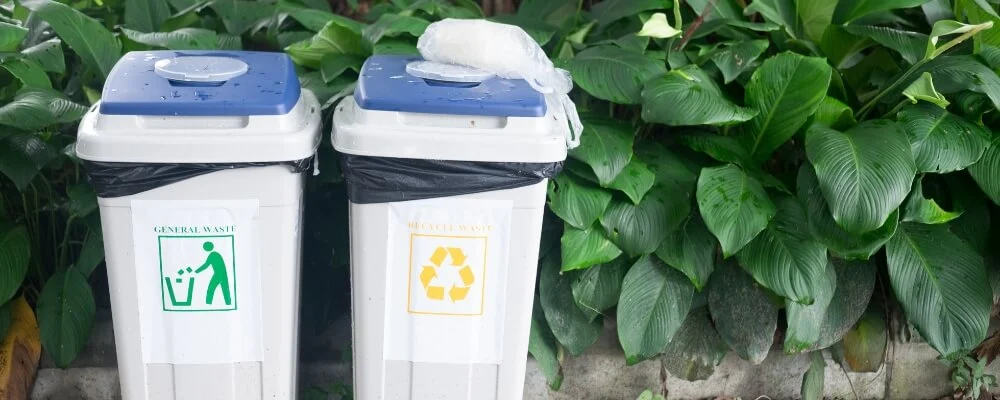
White recycling bins are generally associated with the collection of soft plastics. Soft plastics refer to any plastic that can be scrunched or torn into a ball. This category includes items like plastic bags, bubble wrap, plastic packaging, and certain types of food packaging.
While soft plastics are indeed plastic, they can’t usually be recycled in the same manner as hard plastics due to their differing chemical composition and physical properties. Soft plastics often require a separate collection and recycling process. This process includes melting down the plastics and remolding them into new plastic products.
White, a neutral color, is chosen to signify the separate treatment required for soft plastics. It prompts users to differentiate these materials from other types of recyclable waste, ensuring the efficient and effective recycling of these materials. Depending on local rules and guidelines, these bin colors and their respective waste types may vary. Always check with your local waste management services for the most accurate information.
Ways That Recycling Bins Help The Environment
Recycling bins play a significant role in environmental conservation by enabling waste segregation and recycling. Here are some key ways recycling bins help the environment:
- Resource Conservation: When we recycle, we reuse materials rather than extract and process new raw materials. This reduces the demand for natural resources like timber, water, and minerals.
- Energy Efficiency: Manufacturing products from recycled materials generally consumes less energy than producing them from new raw materials. This is because the extraction and processing of raw materials often require more energy.
- Waste Reduction: By separating recyclable materials and placing them in the appropriate recycling bins, we can prevent them from ending up in landfills. This helps to reduce the amount of waste that needs to be disposed of and manages the limited space in our landfills more efficiently.
- Reduces Pollution: Extraction and processing of raw materials often lead to air and water pollution. Recycling can reduce the need for these processes, reducing the associated pollution. Additionally, recycling can prevent certain materials from ending up in the environment where they can cause harm. For example, recycling plastic can help reduce the amount of plastic in our oceans.
- Greenhouse Gas Emissions: Manufacturing processes that use raw materials typically emit more greenhouse gases than recycled materials. Therefore, recycling can help reduce greenhouse gas emissions, contributing to global climate change.
- Promotes Sustainable Practices: Recycling bins encourage individuals and businesses to think more about their consumption habits and the lifecycle of their products. This fosters a culture of sustainability, where resources are used more efficiently and thoughtfully.
Recycling bins, and the recycling practices they facilitate, significantly contribute to environmental conservation and sustainability by reducing demand for raw materials, conserving energy, minimizing waste, and decreasing pollution and greenhouse gas emissions.
Conclusion
Understanding the color codes of recycling bins is a crucial step toward more effective waste management and sustainable living. By knowing what each color represents—be it blue for paper, green for organic waste, red for specific plastic-coated waste or hazardous material, yellow for mixed recyclables, or white for soft plastics—we can ensure that our waste is correctly sorted and sent for efficient recycling. This not only helps reduce the contamination of the recycling stream but also promotes the conservation of our natural resources, reduces pollution, and combats climate change.
In essence, the simple act of correctly using recycling bins, guided by their color codes, empowers each of us to contribute significantly towards a more sustainable and environmentally-friendly future.

